Are House Rabbits Good Pets? Absolutely, they can be wonderful companions, offering affection and joy. At PETS.EDU.VN, we believe that with the right knowledge and preparation, a pet bunny can thrive in your home. Understanding their needs is key to a happy, healthy rabbit. Discover insights on bunny bonding, rabbit behavior, and creating a fulfilling life for your furry friend.
1. The Allure of House Rabbits: Why They Make Great Companions
Rabbits, often seen as simple starter pets, possess a unique charm that makes them excellent house companions. Their quiet nature, trainability, and affectionate personalities endear them to many. However, potential owners should be aware of the responsibilities involved. Let’s explore why these adorable creatures can be a perfect fit for the right home.
1.1. Quiet Companions in a Noisy World
In today’s bustling world, a quiet pet can be a welcome addition to any household. Unlike dogs or cats, rabbits are generally silent, making them ideal for apartment living or for those who value peace and tranquility. Though not entirely mute, their vocalizations are subtle, consisting mainly of soft purrs or teeth-grinding when content. This makes them ideal pets for those living in apartments or shared spaces where noise could be a concern.
Exception: Rabbits may thump their hind legs when startled or upset, a surprisingly loud behavior used to warn others of danger. Understanding this behavior is crucial for addressing your rabbit’s concerns and ensuring a calm environment.
1.2. Litterbox Training: Maintaining a Clean Home
One of the most appealing aspects of owning a house rabbit is their ability to be litterbox trained. This simplifies cleanup and allows rabbits to roam freely without constant supervision. They instinctively prefer to relieve themselves in one area, making litterbox training relatively straightforward.
Tips for Litterbox Success:
- Location: Place the litterbox in a corner of the rabbit’s enclosure or a preferred spot.
- Hay Placement: Position hay near or in the litterbox to encourage use, as rabbits often eat and eliminate simultaneously.
- Consistency: Clean the litterbox daily to maintain a fresh and inviting environment.
1.3. Odor Control: Debunking the Myth of Smelly Rabbits
Contrary to popular belief, rabbits are not inherently smelly animals. They diligently groom themselves and maintain a clean environment. The primary source of odor is their urine, which contains ammonia. However, regular cleaning of their litterbox and enclosure can effectively eliminate any unpleasant smells.
1.4. Lifespan: A Decade of Companionship
Rabbits have a relatively long lifespan, typically living between 8 and 12 years, and sometimes even longer with proper care. This long-term commitment provides ample opportunity for bonding and creating lasting memories. Potential owners should consider this longevity before bringing a rabbit home.
Factors Influencing Lifespan:
- Breed: Some breeds are predisposed to certain health conditions that can affect their lifespan.
- Diet: A balanced diet rich in hay, fresh vegetables, and limited pellets is essential for overall health.
- Environment: Indoor rabbits generally live longer than outdoor rabbits due to protection from predators and harsh weather.
- Veterinary Care: Regular checkups and prompt treatment of illnesses can significantly extend a rabbit’s life.
1.5. Trainability: Beyond the Basics
Rabbits are intelligent creatures capable of learning various tricks and commands. Positive reinforcement techniques, such as treats and praise, can be used to teach them to come when called, spin, or even perform agility courses. Training not only stimulates their minds but also strengthens the bond between rabbit and owner.
Training Tips:
- Start Early: Begin training when the rabbit is young, as they are more receptive to learning.
- Keep it Positive: Use only positive reinforcement methods, avoiding punishment or scolding.
- Be Patient: Rabbits learn at their own pace, so be patient and persistent.
- Use High-Value Treats: Small pieces of their favorite vegetables or fruits can be highly motivating.
1.6. Social Butterflies: Affectionate and Engaging
Rabbits are social animals that thrive on interaction and attention. They enjoy spending time with their owners, whether it’s cuddling, playing, or simply being in the same room. They often express affection by licking, nudging, or circling their owner’s feet.
Signs of Affection:
- Grooming: Licking or grooming their owner is a sign of love and trust.
- Circling: Running circles around their owner’s feet indicates excitement and affection.
- Binkying: Jumping and twisting in the air is a sign of pure joy and happiness.
- Laying Down: Relaxing and sprawling out near their owner signifies comfort and trust.
1.7. Gentle Nature: Ideal for Calm Environments
Rabbits are generally gentle and docile creatures, especially when handled with care. They rarely bite or scratch unless they feel threatened or frightened. Their gentle nature makes them suitable for calm households and individuals who appreciate a quiet companion.
Handling Tips:
- Approach Gently: Avoid sudden movements or loud noises that may startle the rabbit.
- Support Properly: When picking up a rabbit, always support their hindquarters to prevent injury.
- Respect Boundaries: Pay attention to the rabbit’s body language and avoid forcing interaction if they are uncomfortable.
1.8. The Joy of Petting: A Relaxing Ritual
Many rabbits enjoy being petted, especially on their head and behind their ears. Petting can be a relaxing and bonding experience for both rabbit and owner. Some rabbits will even purr or grind their teeth softly when content.
Petting Preferences:
- Head: Most rabbits enjoy being petted on their head, especially between their ears.
- Cheeks: Gently stroking their cheeks can also be very soothing.
- Back: Some rabbits enjoy being petted along their back, but avoid touching their sensitive hindquarters.
1.9. Undeniably Adorable: A Source of Joy
Rabbits are undeniably adorable, with their soft fur, twitching noses, and expressive eyes. Their playful antics and endearing personalities bring joy to any home. From binkying to begging for treats, rabbits provide endless entertainment and companionship.
1.10. Breed Variety: Finding the Perfect Match
There are numerous rabbit breeds, each with its own unique characteristics and temperament. From the tiny Netherland Dwarf to the giant Flemish Giant, there’s a rabbit breed to suit every lifestyle and preference. Researching different breeds is essential for finding the perfect match.
Popular Rabbit Breeds:
| Breed | Size | Temperament |
|---|---|---|
| Netherland Dwarf | Small | Active, Curious |
| Mini Rex | Medium | Docile, Affectionate |
| Dutch | Medium | Friendly, Playful |
| French Lop | Large | Calm, Gentle |
| Flemish Giant | Giant | Docile, Patient |
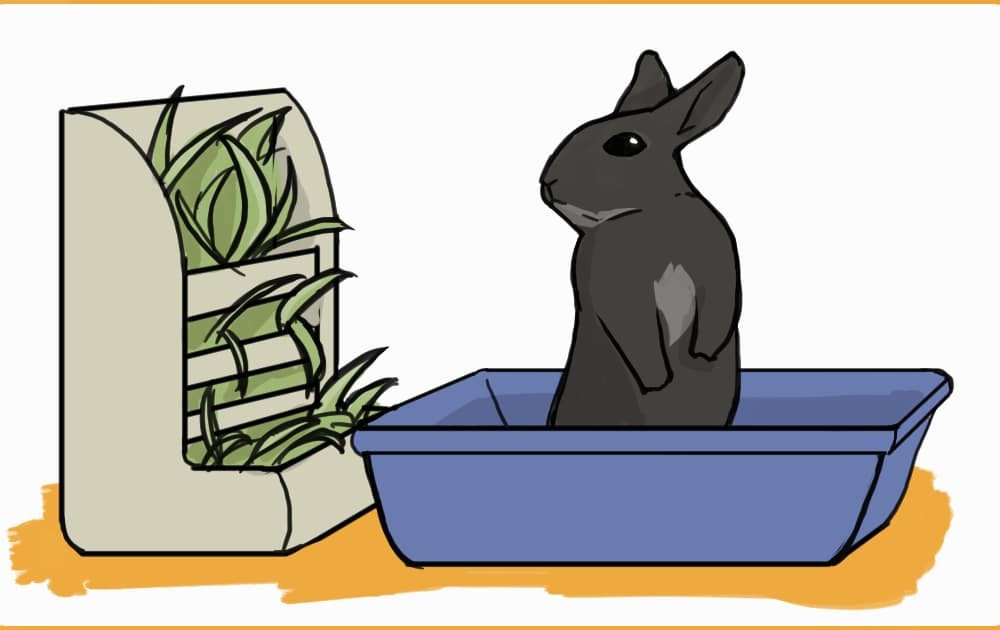

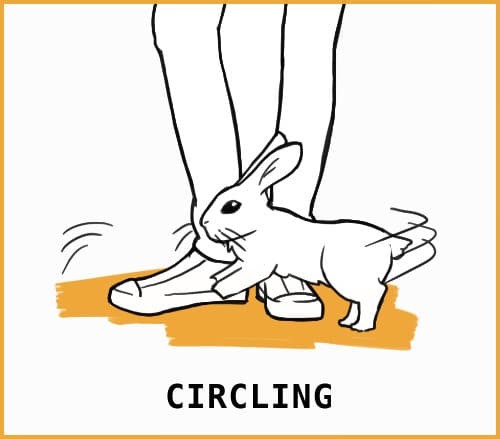
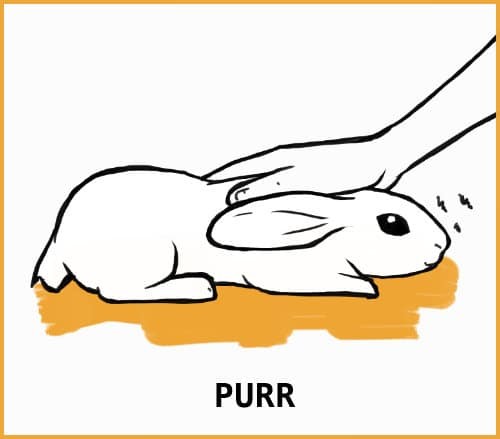


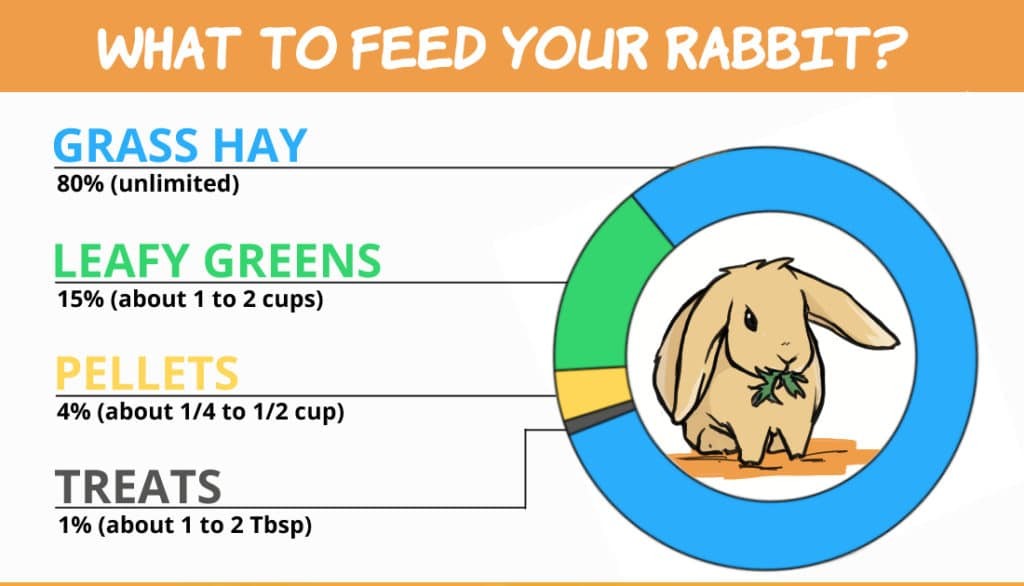
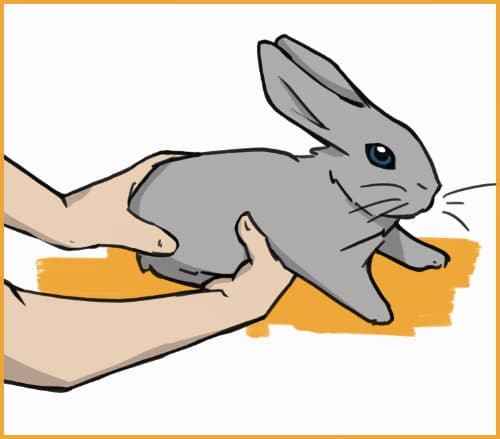
2. Navigating the Challenges: Understanding the Cons of Owning a House Rabbit
While rabbits offer numerous benefits as pets, potential owners should also be aware of the challenges involved. Understanding these drawbacks is crucial for making an informed decision and providing proper care. Let’s explore some common cons of owning a house rabbit.
2.1. The Chewing Instinct: Protecting Your Belongings
Rabbits have a natural instinct to chew, as their teeth continuously grow throughout their lives. This can lead to destructive behavior if they are not provided with appropriate chew toys and a rabbit-proofed environment. Furniture, electrical cords, and baseboards are all potential targets.
Rabbit-Proofing Tips:
- Cover Electrical Cords: Use plastic tubing or cord protectors to prevent rabbits from chewing on wires.
- Provide Chew Toys: Offer a variety of safe chew toys, such as wooden blocks, cardboard boxes, and untreated wicker baskets.
- Protect Furniture: Cover furniture with blankets or sheets, or use furniture protectors to deter chewing.
- Block Access: Restrict access to areas that cannot be rabbit-proofed.
2.2. Handling Hurdles: Overcoming the Fear of Being Held
Many rabbits dislike being held, as it triggers their natural prey instincts. Being lifted off the ground makes them feel vulnerable and trapped. Forcing a rabbit to be held can damage the bond between rabbit and owner and cause unnecessary stress.
Building Trust:
- Approach Slowly: Approach the rabbit calmly and avoid sudden movements.
- Offer Treats: Use treats to associate your presence with positive experiences.
- Pet on the Floor: Interact with the rabbit at their level, petting them on the floor instead of picking them up.
- Respect Boundaries: If the rabbit resists being held, respect their boundaries and try again later.
2.3. Space Requirements: Providing Adequate Living Areas
Rabbits require more space than many people realize. They need ample room to hop, run, and explore. Small cages are inadequate and can lead to boredom and behavioral problems. A spacious enclosure or a dedicated rabbit-proofed room is essential.
Space Recommendations:
- Enclosure Size: The enclosure should be at least four times the size of the rabbit when fully stretched out.
- Exercise Area: Rabbits need at least 2-3 hours of exercise outside their enclosure each day.
- Vertical Space: Provide multiple levels or platforms for the rabbit to climb and explore.
2.4. Attention Needs: Social Interaction and Enrichment
Rabbits are social animals that require regular interaction and attention. They cannot be left alone for extended periods without proper enrichment. Neglecting their social needs can lead to boredom, depression, and destructive behavior.
Enrichment Ideas:
- Toys: Provide a variety of toys, such as tunnels, balls, and puzzles, to keep them entertained.
- Social Interaction: Spend time with the rabbit each day, petting, playing, or simply talking to them.
- Bonded Pair: Consider getting a second rabbit to provide companionship.
- Environmental Enrichment: Rotate toys and rearrange the enclosure regularly to keep things interesting.
2.5. Dietary Demands: Meeting Specific Nutritional Needs
Rabbits have a complex digestive system that requires a specific diet. They need a constant supply of hay, fresh vegetables, and limited pellets. An improper diet can lead to serious health problems, such as gastrointestinal stasis and obesity.
Dietary Guidelines:
- Hay: Hay should make up 80% of the rabbit’s diet.
- Vegetables: Offer 1-2 cups of fresh, leafy green vegetables daily.
- Pellets: Limit pellets to ¼ – ½ cup per day, depending on the rabbit’s size and activity level.
- Treats: Offer occasional treats in moderation, such as small pieces of fruit or vegetables.
2.6. Veterinary Expenses: Planning for Specialized Care
Rabbits require specialized veterinary care, as their anatomy and physiology differ from cats and dogs. Finding a rabbit-savvy veterinarian can be challenging, and their services tend to be more expensive. Regular checkups and emergency care can quickly add up.
Financial Considerations:
- Annual Checkups: Plan for annual veterinary checkups to monitor the rabbit’s health.
- Spaying/Neutering: Spaying or neutering is essential for preventing reproductive health problems and behavioral issues.
- Emergency Care: Set aside funds for potential emergency veterinary visits.
- Pet Insurance: Consider purchasing pet insurance to help cover unexpected medical expenses.
2.7. Fragile Nature: Handling with Utmost Care
Rabbits have delicate bones and are prone to injuries if handled improperly. They can easily break their back if they kick out or struggle while being held. Children should be supervised closely when interacting with rabbits to prevent accidental injuries.
Handling Guidelines:
- Support Hindquarters: Always support the rabbit’s hindquarters when picking them up.
- Avoid Squeezing: Do not squeeze or hug the rabbit too tightly.
- Keep Low to the Ground: If possible, hold the rabbit close to the ground to minimize the risk of injury if they jump or fall.
- Supervise Children: Supervise children closely when they are handling rabbits.
2.8. Shedding Season: Managing Hair and Allergies
Rabbits shed a lot, especially during shedding season. Their fur can get everywhere, causing allergies and requiring frequent cleaning. Regular grooming can help minimize shedding, but it can be a time-consuming task.
Grooming Tips:
- Brush Regularly: Brush the rabbit several times a week, especially during shedding season.
- Use the Right Brush: Use a brush specifically designed for rabbits, such as a slicker brush or a grooming glove.
- Vacuum Frequently: Vacuum the house regularly to remove shed fur.
- Air Purifier: Use an air purifier to help reduce allergens in the air.
3. Are Rabbits Good Pets for Children?
Rabbits can be wonderful family pets, but it’s crucial to understand their needs and limitations, especially when considering them as pets for children. Rabbits require gentle handling and consistent care, which may be challenging for younger children to provide. It’s essential to approach rabbit ownership with a clear understanding of the responsibilities involved and to ensure that both the child and the rabbit can thrive in the same environment.
While rabbits can bring joy to a family, children must learn to interact with them respectfully and gently. This includes understanding that rabbits don’t always enjoy being picked up or cuddled, and that their comfort and safety should always be prioritized.
3.1. Adult Supervision is Key
The most important factor in determining whether a rabbit is a good pet for a child is the level of adult supervision and involvement. Rabbits require consistent care, including feeding, cleaning, and providing enrichment, which should primarily be the responsibility of an adult. Children can assist with these tasks, but an adult should always oversee and ensure that the rabbit’s needs are met.
3.2. Teaching Gentle Handling
Children need to be taught how to handle rabbits gently and respectfully. This includes supporting their hindquarters when picking them up, avoiding squeezing or hugging them too tightly, and recognizing signs of stress or discomfort. It’s also important to teach children that rabbits have individual personalities and preferences, and that they should respect the rabbit’s boundaries.
3.3. Understanding Rabbit Behavior
Educating children about rabbit behavior is crucial for fostering a positive relationship. Children should learn to recognize signs of happiness, such as binkying or purring, as well as signs of stress, such as thumping or hiding. Understanding these cues can help children interact with rabbits in a way that is both enjoyable and safe for both parties.
3.4. Age-Appropriate Responsibilities
Assigning age-appropriate responsibilities can help children feel involved in the care of their rabbit. Younger children can assist with tasks such as refilling the hay feeder or providing fresh water, while older children can take on more responsibility, such as cleaning the litterbox or grooming the rabbit. It’s important to ensure that children are capable of handling these tasks safely and effectively.
3.5. Alternative Pet Options
If a rabbit is not the right fit for your family, there are many other pet options to consider. Smaller pets such as guinea pigs or hamsters may be more suitable for younger children, as they are generally more resilient and easier to care for. Dogs and cats can also make wonderful family pets, but require a different level of commitment and training.
4. How Do You Know Your Rabbit Loves You?
Rabbits express affection in subtle yet meaningful ways. Understanding their body language is key to recognizing their love and building a strong bond. Here are some common signs that your rabbit loves you.
4.1. Grooming
One of the most common signs of affection is grooming. Rabbits will lick or groom their owners to show their love and trust. This behavior is similar to how they groom other rabbits in their social group.
4.2. Circling
Running circles around your feet is another sign of excitement and affection. Rabbits will often do this when they are happy to see you or when they are trying to get your attention.
4.3. Binkying
Binkying is a behavior unique to rabbits, involving jumping and twisting in the air. This is a sign of pure joy and happiness. If your rabbit binkies around you, it means they are comfortable and content in your presence.
4.4. Lounging
Sprawling out near you is a sign of trust and relaxation. Rabbits are vulnerable when they are lying down, so if they choose to do so near you, it means they feel safe and secure in your company.
4.5. Nudging
Nudging your hand or leg with their nose is a way of asking for attention or petting. If your rabbit nudges you, it means they enjoy your company and want to interact with you.
5. Finding Reliable Information and Services at PETS.EDU.VN
At PETS.EDU.VN, we understand the challenges and joys of pet ownership. We strive to provide comprehensive, accurate, and up-to-date information to help you make informed decisions about your pet’s care. Our website offers a wealth of resources, including articles, guides, and product reviews, covering a wide range of topics, from nutrition and health to behavior and training.
5.1. Expert Advice and Guidance
Our team of experienced veterinarians, animal behaviorists, and pet care professionals is dedicated to providing expert advice and guidance. We carefully research and review all of our content to ensure that it is accurate, reliable, and easy to understand.
5.2. Comprehensive Resource Library
Our website features a comprehensive resource library covering a wide range of pet-related topics. Whether you’re looking for information on choosing the right pet, understanding your pet’s behavior, or finding the best products for their needs, you’ll find it all at PETS.EDU.VN.
5.3. Local Service Directory
We also offer a local service directory to help you find trusted veterinarians, groomers, trainers, and other pet care professionals in your area. Our directory features detailed listings with reviews and ratings, making it easy to find the right services for your pet’s needs.
6. Staying Informed: The PETS.EDU.VN Newsletter
Stay ahead of the curve with the PETS.EDU.VN newsletter. Receive timely tips and tricks delivered directly to your inbox, ensuring you’re always well-prepared to provide the best care for your beloved companion. Sign up today and gain access to valuable insights and exclusive offers.
7. Recommended Products and Brands
Choosing the right products for your pet can be overwhelming. At PETS.EDU.VN, we recommend trusted brands that prioritize quality and safety. Explore our curated selection of products, ensuring your pet receives the best possible care.
8. Frequently Asked Questions (FAQ) about House Rabbits as Pets
Here are some frequently asked questions to help you decide if a house rabbit is the right pet for you:
8.1. Are rabbits good pets for first-time owners?
Rabbits can be good pets for first-time owners, but they require research and preparation. Understanding their specific needs is essential for providing proper care.
8.2. How much does it cost to own a rabbit?
The cost of owning a rabbit varies depending on factors such as breed, location, and lifestyle. Initial expenses include enclosure, food, and veterinary care. Ongoing costs include food, litter, and toys.
8.3. Do rabbits need to be spayed or neutered?
Yes, spaying or neutering is essential for preventing reproductive health problems and behavioral issues.
8.4. How often do rabbits need to see a vet?
Rabbits should have an annual checkup with a rabbit-savvy veterinarian. They should also be seen for any signs of illness or injury.
8.5. Can rabbits live with other pets?
Rabbits can live with other pets, but introductions should be done carefully and gradually. Supervision is essential, especially with dogs and cats.
8.6. How long can rabbits be left alone?
Rabbits should not be left alone for more than 8-10 hours at a time. They need access to food, water, and a clean litterbox.
8.7. Do rabbits need to be vaccinated?
Vaccinations for rabbits are not required in all areas. Consult with your veterinarian to determine if vaccinations are necessary in your region.
8.8. What are some common health problems in rabbits?
Common health problems in rabbits include dental disease, gastrointestinal stasis, respiratory infections, and ear infections.
8.9. How do I know if my rabbit is sick?
Signs of illness in rabbits include loss of appetite, lethargy, diarrhea, sneezing, and discharge from the eyes or nose. Contact your veterinarian immediately if you notice any of these signs.
8.10. Can rabbits be trained?
Yes, rabbits can be trained using positive reinforcement techniques. They can learn to come when called, use a litterbox, and perform tricks.
9. Conclusion: Welcoming a House Rabbit into Your Life
Deciding whether house rabbits are good pets is a personal journey. By understanding their needs, challenges, and unique qualities, you can determine if you’re ready to welcome these delightful creatures into your home. At PETS.EDU.VN, we’re dedicated to empowering you with the knowledge and resources to provide the best possible care. Remember, a well-informed owner is a rabbit’s best friend.
Ready to embark on this rewarding adventure? Explore PETS.EDU.VN for in-depth articles, expert advice, and local services to support you every step of the way. For personalized guidance and assistance, contact us at 789 Paw Lane, Petville, CA 91234, United States, Whatsapp: +1 555-987-6543. Let’s create a world where every rabbit thrives. Visit pets.edu.vn today!
